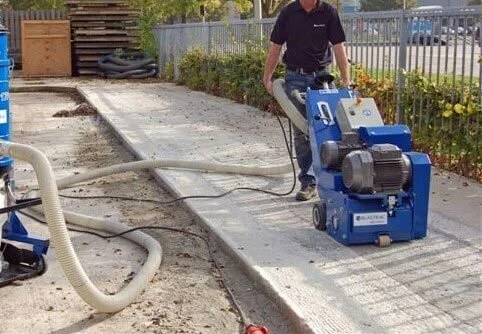How Do I Hone My Concrete Floor?
/Ho, ho, hone. Honing a concrete floor is much like stripping away layers of wrapping paper around a Christmas gift to reveal the beautiful surprise underneath!
Essentially, honed concrete refers to the progressive grinding of the surface of an existing concrete floor using diamond tooling to achieve a flat, smooth finish. The grinding process will reveal the glistening aggregates (sand and small stones) within the concrete mix to create a hard-wearing, good-looking and feet-friendly surface.
Honed concrete makes a stunning style statement in alfresco outdoor areas and is just as effective in an outdoor entertainment area or around a pool - and best of all, it is affordable and will be virtually maintenance-free for decades.
You can bring an old, weather-beaten or stained aggregate surface back to life by honing it or you can polish up a newly laid concrete substrate to get your desired smooth finish - all you need is the right equipment and a clear plan of what needs to be done and you’ll be on your way.
So how do I hone my concrete floor?
First up, it’s important to note that honing concrete involves two to three stages. Firstly a Coarse Diamond (20-30grit) is attached to the Planetary Grinder and run over the floor. The depth of honing will determine the extent to which the aggregate/stone is exposed. Once the stone is exposed to the level of consistency you like, the next 60-70grit is run over the floor to remove scratches. If a finer finish is required, a 100-120grit Diamond can be fitted for a very smooth finish.
Sealing of the floor is highliy recommended to prevent staining and the ingress of dirt and contaimiates. For areas around pools and where there may be a slip hazard, a non slip silica sand can be added to the sealer to give the surface grip.
Honing can be done in either a wet or dry process - each of which has its advantages. Wet processing is sometimes but the messy slurry can create more time when cleaning up. The slurry can also stain render and finished brick. Plants and Lawns also tend not to grow where slurry get s buried. Dry grinding has a vacuum collected and all the waste goes in to a sealable heavy duty bag for easy disposal. An experienced concrete equipment supplier will be able to recommend the best process depending on your application and the results that you are aiming to achieve.
If you’re going the DIY route, you need to find a reputable concrete equipment supplier in your area because you’ll need reliable, quality concrete grinding equipment backed by responsive customer support if you come unstuck. (Don’t forget a vacuum attachment for effective dust removal). Also remember to ask them for their insider tips on how to achieve your desired finish. Some questions to ask include: does the equipment match the job spec, how manoeuvrable is the concrete grinder, what power source is required and how easy is it to change the tooling?
Regardless of the look that you desire, it is important to note that you shouldn’t skip any stages. Each grit is specially designed to smooth out scratches from the previous one, so it is imperative to follow the step-by-step process to achieve a smooth, blemish-free honed surface. And because of all the variables involved (depth of honing, level of aggregate exposure, colour etc), it’s really worthwhile doing a sample patch to see if you’ve honed your skills!
At Concrete Hire, we’ll explain the different processes and ask the right questions to make sure you have the correct equipment, tooling and sealer to achieve your desired look. We’ll also give you a step-by-step ‘How To’ guide so that your job runs smoothly from start to finish. Come in and see us or give us a ring on 1300 048 521 to talk about any aspect of concrete grinding, polishing, pumping, cleaning, repair or demolition. We’ve got the know-how, the experience and the specialised concrete equipment for hire to get your job done - on time and on budget too.

